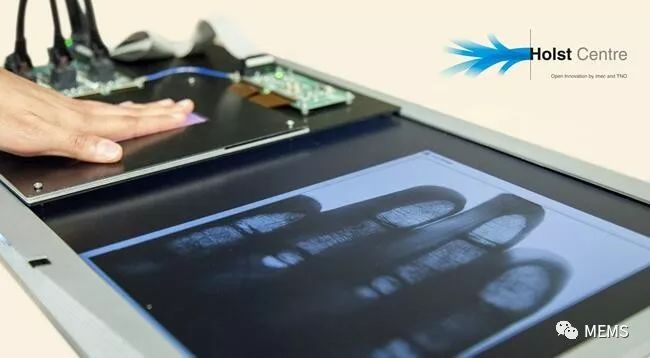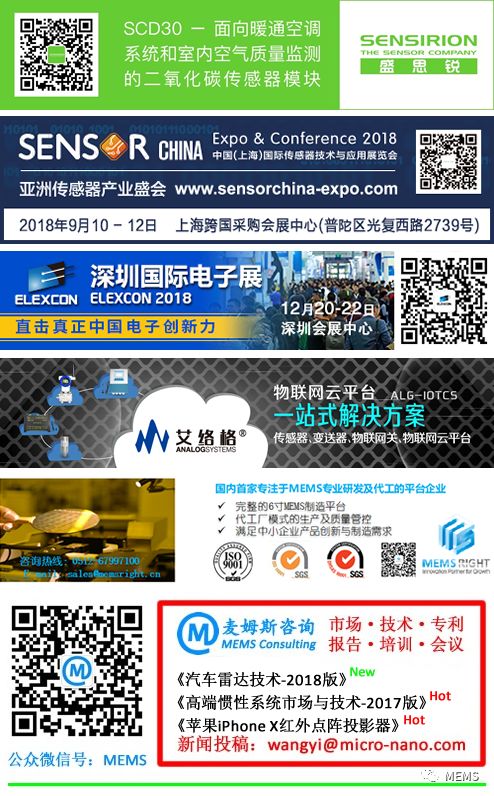According to MEMS Consulting, researchers from the Holst Center in Belgium’s IMEC and the Netherlands’ TNO have demonstrated a novel flexible, large-area sensor technology for detecting fingerprints and palm prints. This new sensor is less than 0.2 millimeters thick and does not have bulky prisms or moving parts, allowing it to be embedded in objects such as mobile phones and door handles, creating an “invisible” yet secure access control system capable of identifying whether the scanned subject is a living person rather than a phantom or impersonator. This technology paves the way for low-cost sensors used in large-scale finger and palm print scanners, which will be showcased at the 2018 Display Week Innovation Zone in Los Angeles, USA, and at the IMEC Technology Forum (ITF) in Antwerp, Belgium. Two demonstration units will showcase the technological potential in high resolution and large effective detection areas. One unit, measuring 6 x 8 centimeters with a resolution of 200 ppi, is sufficiently large for the four-finger scanners currently used by border management agencies and provides adequate image quality for basic identity verification applications. Meanwhile, a slightly smaller 500 ppi demonstration unit can deliver higher image quality, meeting the standards of the FBI and allowing law enforcement agencies to visualize details and pores for more robust identification.

Like the Holst Center’s earlier flexible X-ray detectors, this fingerprint sensor combines an organic photodiode front panel, an oxide thin-film transistor (TFT) back panel (initially developed for flexible displays), and a protective thin-film barrier. All three technological elements have already been or are being transferred to industrial production for scaling up and commercialization. This sensor reads fingerprints or palm prints by detecting visible light (400 to 700 nanometers) reflected from the skin’s surface. Moreover, it can also detect some light that penetrates the skin before reflection. This allows it to perceive heartbeats from changes in the capillaries of the hand, thereby verifying that the scanned imprint comes from a living person. Additionally, by using different photodiode materials, the sensor’s functionality can be extended to other wavelengths, such as near-infrared (NIR). This technology will enable new authentication modalities, such as identification through hand vein patterns, which can be even more specific than fingerprints. Near-infrared sensors can also be used for other applications, such as blood oxygen monitoring, night vision, and 3D facial recognition. Hylke Akkerman, project manager at the Holst Center, stated: “The flexible fingerprint sensor demonstration units showcase the versatility and maturity of the flexible electronics technology being developed at the Holst Center. Since the underlying technology has already been applied in the flat panel industry, a fast track for the manufacturing of the new flexible fingerprint sensors has been established, and we are looking for industrial partners to take this step forward.”
Recommended Training: From July 13 to July 15, 2018, MEMS Consulting will host a “MEMS Manufacturing Process Training Course” in Wuxi, covering topics including: (1) Silicon-based MEMS manufacturing processes (bulk micromachining, surface micromachining, and CMOS MEMS technology); (span>(2) Special thin-film process technologies for MEMS (deposition processes for piezoelectric films such as AlN and PZT), including ultrasonic fingerprint sensors; (3) Mask manufacturing processes; (4) Non-silicon-based MEMS manufacturing processes (LIGA, quasi-LIGA, precision machining, micro-injection molding, etc.), applicable to microfluidic chips; (5) Semiconductor laser VCSEL manufacturing processes; (6) Elective courses: MEMS design tools Tanner software and applications (MEMS design – modeling and simulation methods, successful case studies of MEMS foundry collaborations).
MEMS Consulting Contact: Lin Peng Phone: 17368357393 Email: [email protected]
Further Reading: “Fingerprint Sensor Applications and Technology – 2017 Edition”
